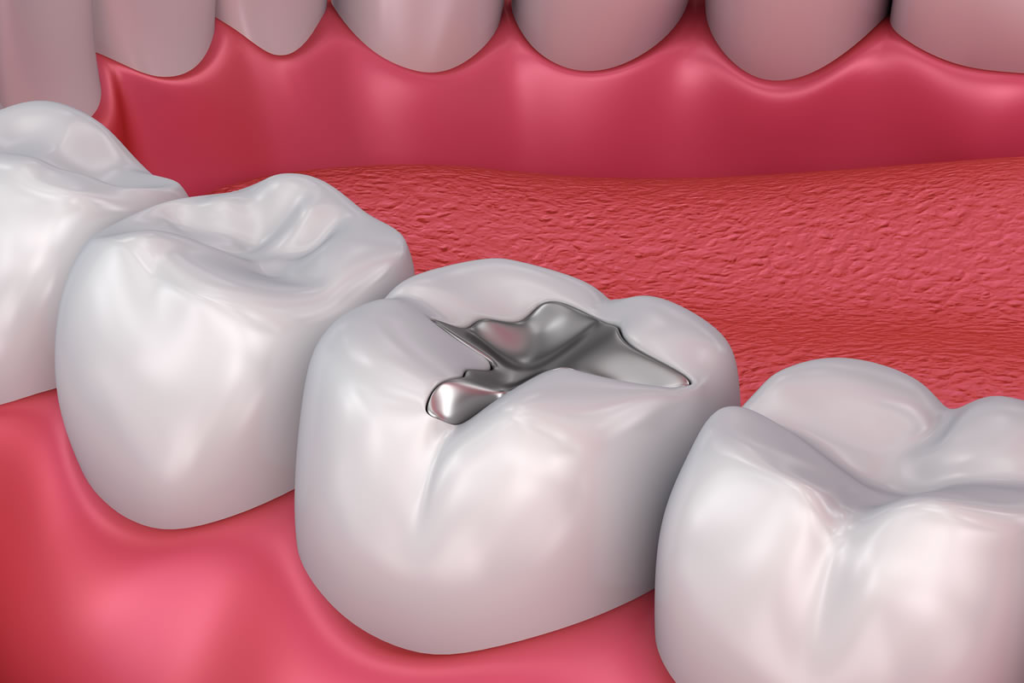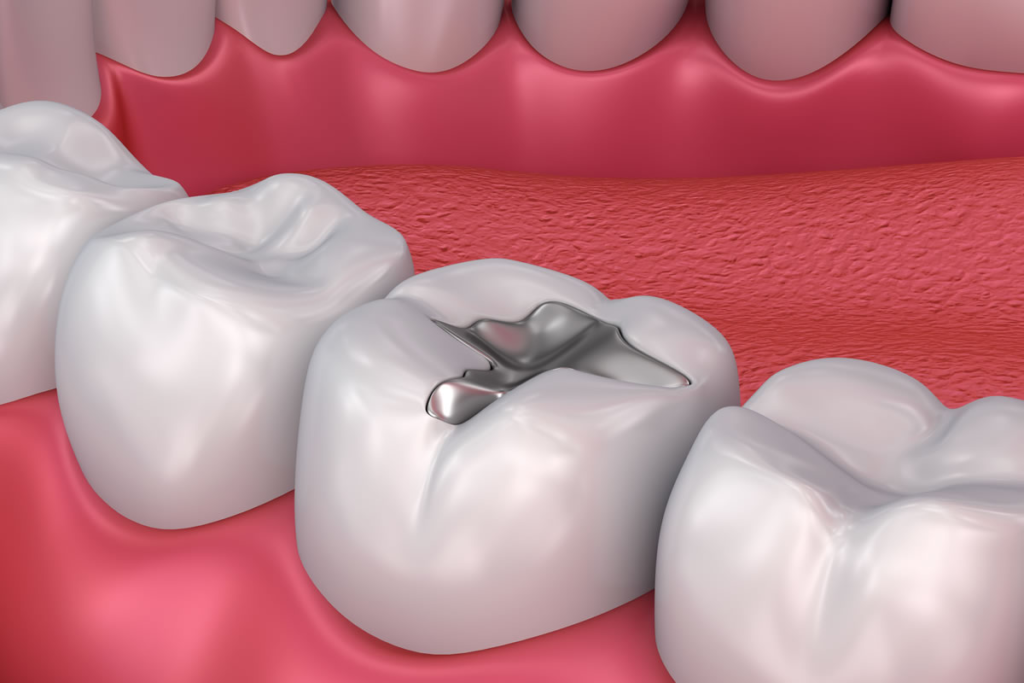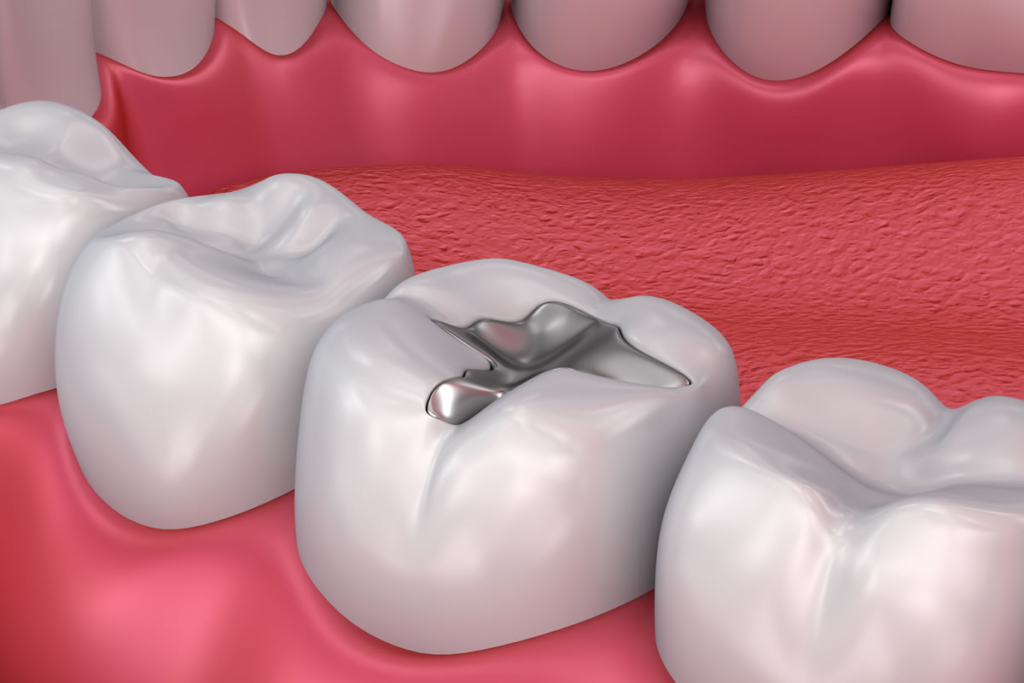Introduction to dental fillings in Scarborough:

Maintaining optimal oral health is essential for overall well-being. Dental fillings play a crucial role in dentistry, offering a reliable and effective solution to tooth decay and structural damage. In this comprehensive article, we will delve into the world of dental fillings, exploring what they are, why they are necessary, the different types available, and their significant role in preserving oral health and promoting overall dental wellness.
- What Are Dental Fillings in Scarborough?
Dental fillings are dental materials that are used to restore and repair teeth that have been affected by decay or damage. Their primary purpose is to replace the lost tooth structure, prevent further decay or damage, and restore proper functionality to the affected tooth. Fillings are also utilized to repair teeth that have been worn down or fractured due to injury or teeth grinding, restoring their integrity and strength.
- Causes of Tooth Decay:
Tooth decay, commonly known as dental caries or cavities, is a prevalent oral health issue caused by various factors. Poor oral hygiene practices, such as inadequate brushing and flossing, can lead to the buildup of plaque, a sticky film of bacteria that produces acids that attack the tooth enamel.
Additionally, the frequent consumption of sugary foods and beverages provides nourishment for harmful bacteria, further contributing to tooth decay. Insufficient exposure to fluoride, either through drinking water or dental products, also weakens the enamel and makes teeth more susceptible to decay. If left untreated, tooth decay can progress, leading to pain, infection, and potential tooth loss.
The Importance of Regular Dental Check-ups and Professional Cleanings
Regular dental check-ups and professional cleanings play a significant role in the maintenance and longevity of dental fillings. During routine examinations, dentists can assess the condition of existing fillings, identify any signs of deterioration or damage, and take necessary action to address them promptly.
Additionally, professional cleanings help remove plaque and tartar buildup, reducing the risk of decay and preserving the integrity of the fillings. Dentists may also recommend protective measures, such as dental sealants or fluoride treatments, to further safeguard the teeth and fillings against decay. By maintaining regular dental visits, individuals can ensure the longevity and effectiveness of their dental fillings, promoting overall oral health and minimizing the need for extensive dental treatments in the future.
- Importance of Dental Fillings in Scarborough:
Dental fillings in Scarborough serve multiple essential purposes and offer numerous benefits for oral health:
3.1 Restoration of Tooth Structure: One of the primary purposes of dental fillings is to restore the natural form and structure of a decayed or damaged tooth. By removing the decayed portion and filling it with suitable materials, fillings provide support and prevent further deterioration of the affected tooth. This restoration helps maintain the proper alignment and stability of the dental arch.
3.2 Prevention of Tooth Loss: By addressing decay and damage early on, dental fillings help prevent the need for more extensive dental treatments such as extractions or root canals. The timely placement of fillings helps preserve the natural tooth and prevents the spread of infection or damage to neighboring teeth, ensuring the longevity of the natural dentition.
3.3 Relief from Tooth Sensitivity: Decayed teeth often become sensitive to hot, cold, or sweet stimuli. Dental fillings seal off the exposed dentin, which is responsible for tooth sensitivity, providing relief and reducing discomfort. This allows individuals to enjoy their favorite foods and beverages without experiencing pain or sensitivity.
3.4 Aesthetic Improvement: Modern dental fillings are designed to be aesthetically pleasing. Tooth-colored composite fillings can be precisely matched to the shade of the natural tooth, creating a seamless and natural appearance. This aesthetic improvement not only restores the tooth’s functionality but also enhances the overall appearance of the smile, boosting confidence and self-esteem.
Table: Signs that a Filling May be Needed
| Signs That a Filling May be Needed |
| 1. Toothache or Sensitivity: Persistent toothache or sensitivity to hot, cold, or sweet stimuli could indicate tooth decay or damage that may require a filling. |
| 2. Visible Holes or Dark Spots: If you notice visible holes, pits, or dark spots on your teeth, it may be a sign of tooth decay that necessitates a filling. |
| 3. Rough or Chipped Tooth Surface: When you run your tongue over a tooth and feel rough or jagged edges, it could indicate enamel erosion or chipped areas that may require a filling. |
| 4. Painful Chewing: If you experience pain or discomfort when chewing, it could be a sign of decay or damage that requires intervention with a filling. |
| 5. Fractured or Broken Tooth: A fractured or broken tooth often requires a filling to restore its structure and protect it from further damage. |
| 6. Lost or Damaged Filling: If a previous filling becomes dislodged or damaged, it is important to have it replaced promptly to prevent additional decay or complications. |
| 7. Tooth Sensitivity to Pressure: If your tooth is sensitive to pressure when biting or chewing, it could indicate an underlying issue that may require a filling. |
| 8. Gum Inflammation or Swelling: Inflammation or swelling of the gums around a specific tooth can be a sign of decay or damage that may require a filling. |
| 9. Persistent Bad Breath: Chronic bad breath, despite practicing good oral hygiene, could indicate tooth decay that may necessitate a filling. |
| 10. Visible Cracks or Fractures: If you can visually identify cracks or fractures in your teeth, it is essential to seek dental attention to determine if a filling is needed. |
Note: that the presence of any of these signs does not guarantee that a filling is required. It is important to consult with a dental professional for an accurate diagnosis and appropriate treatment recommendation.
- Types of Dental Fillings:
Several materials are used for dental fillings, each with its own unique characteristics. The choice of filling material depends on various factors, including the extent of the decay or damage, the location of the tooth, aesthetic concerns, and the patient’s preferences. The following are the most common types of dental fillings:
4.1 Amalgam Fillings: Amalgam fillings, often referred to as silver fillings, are composed of a mixture of metals, including mercury, silver, tin, and copper. They have been widely used for many decades due to their durability and cost-effectiveness. Amalgam fillings are exceptionally robust and can withstand the forces of chewing and grinding. However, their dark color makes them less aesthetically appealing, especially for visible areas of the mouth.
4.2 Composite Fillings: Composite fillings are made of a tooth-colored resin material that can be precisely matched to the shade of the natural tooth. These fillings offer excellent aesthetics and are an ideal choice for teeth in visible areas. Although they are slightly less durable than amalgam fillings, advancements in technology have significantly improved the durability of composite fillings, making them a popular choice for many individuals.
4.3 Ceramic Fillings: Ceramic fillings, also known as porcelain fillings, are made of high-quality dental ceramics. They are highly valued for their exceptional aesthetics and natural appearance, as they closely mimic the appearance of natural tooth enamel. Ceramic fillings are highly biocompatible, meaning they are well-tolerated by the body, and they are resistant to staining. Although ceramic fillings are more expensive than amalgam or composite fillings, they are often the preferred choice for individuals seeking superior aesthetics and long-term durability.
4.4 Glass Ionomer Fillings: Glass ionomer fillings are a mixture of acrylic and glass powders. They are commonly used in pediatric dentistry and for small fillings in non-stress-bearing areas of the mouth. One notable advantage of glass ionomer fillings is that they release fluoride over time, which helps in preventing further decay. However, they are generally less durable than other filling materials and may require replacement over time.
4.5 Gold Fillings: Gold fillings, made of a gold alloy, are highly durable and have excellent longevity. They are well-tolerated by gum tissues and are resistant to corrosion. However, gold fillings are more expensive than other filling materials, and their distinct color makes them more suitable for posterior teeth rather than visible areas of the mouth. Placement of gold fillings may require multiple visits, as they are custom-made in a dental laboratory.
- The Dental Filling Procedure:
The dental filling procedure typically involves the following steps:
5.1 Examination and Diagnosis: The dentist thoroughly examines the affected tooth and may take dental X-rays to determine the extent of the decay or damage. This examination helps in making an accurate diagnosis and developing an appropriate treatment plan.
5.2 Anesthesia: Before the filling procedure begins, local anesthesia is administered to numb the area around the tooth. This ensures a painless experience during the treatment.
5.3 Decay Removal: Using specialized dental instruments such as a dental drill, air abrasion, or laser, the dentist carefully removes the decayed portion of the tooth. The tooth is prepared to create a clean and stable surface for the filling material.

5.4 Filling Placement: The chosen filling material, whether amalgam, composite, ceramic, glass ionomer, or gold, is placed in layers into the prepared cavity. The dentist shapes and contours the filling material to ensure a proper fit, functionality, and aesthetics. In the case of composite fillings, a curing light is used to harden the material.
5.5 Final Adjustments and Polishing: Once the filling material has hardened, the dentist makes any necessary adjustments to ensure proper alignment and bite. The filling is then polished to achieve a smooth and natural finish, blending seamlessly with the surrounding tooth structure.
- Aftercare and Longevity of Dental Fillings:
To maximize the lifespan and effectiveness of dental fillings, it is crucial to follow proper aftercare and maintain good oral hygiene practices. This includes regular brushing with a fluoride toothpaste, flossing daily, and scheduling routine dental check-ups and cleanings. By adopting these practices, individuals can prevent further decay and identify any potential issues at an early stage.
While dental fillings are durable and can last for several years, they are not indestructible. Over time, fillings may experience wear, chipping, or cracking, which may necessitate replacement. Regular dental visits allow the dentist to monitor the condition of the fillings and address any concerns promptly.
Limitations of Dental Fillings: When Alternative Treatments May be Required
It is important to note that dental fillings are not a cure-all solution for tooth decay and damage. They are most effective when used for small to moderate-sized cavities or areas of damage. In cases where the decay or damage is extensive, alternative treatments such as dental crowns, inlays, onlays, or root canals may be necessary to restore the tooth’s structure and functionality. The choice of treatment depends on factors such as the severity of the condition, the location of the affected tooth, and the individual’s oral health needs. Dentists thoroughly evaluate each case to determine the most appropriate treatment approach, ensuring optimal outcomes and long-term dental health.
Beyond Restoration: The Comprehensive Benefits of Dental Fillings
Beyond their functional and restorative benefits, dental fillings contribute to overall oral health and general well-being. Untreated tooth decay or damage can lead to severe pain, infection, and complications that extend beyond the oral cavity. By addressing these issues with dental fillings, individuals can prevent the spread of infection, protect adjacent teeth from further damage, and maintain proper oral function for chewing and speaking.
Furthermore, restoring the natural form and appearance of the teeth through fillings can have a positive impact on self-confidence and social interactions. A healthy and aesthetically pleasing smile can boost self-esteem and contribute to overall psychological well-being. Therefore, dental fillings not only address immediate oral health concerns but also have broader implications for an individual’s quality of life.
Conclusion:
Dental fillings are indispensable for restoring and preserving teeth affected by decay, damage, or wear. They serve a vital role in maintaining oral health, preventing further complications, and enhancing the aesthetics of the smile. By understanding the importance of dental fillings and practicing good oral hygiene, individuals can enjoy a healthy and confident smile for years to come. Regular consultations with a dental professional ensure personalized treatment and optimal dental care.


